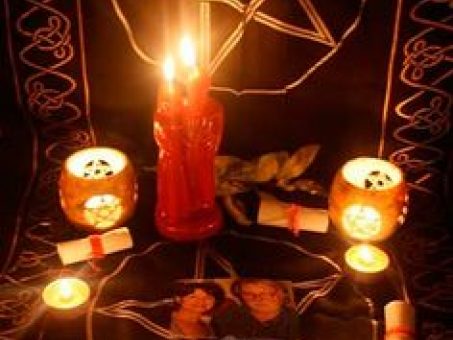Step-by-Step Manual on How to Become a Freemason for New Members
Step-by-Step Manual on How to Become a Freemason for New Members
Blog Article
Discovering the Mysteries of the copyright: What You Required to Know
The copyright, a term often shrouded in intrigue and dispute, represents a complicated tapestry of historical reality and contemporary myth. Developed in the late 18th century, this secret society was initially rooted in the Knowledge's ideals yet has considering that become identified with conspiracy theories about elite control (benefit of joining freemason).
Beginnings of the copyright
The beginnings of the copyright are steeped in a mix of historical intrigue and ideological eagerness. Developed in 1776 in Ingolstadt, Bavaria, by Adam Weishaupt, the group was originally formed as a secret culture aimed at advertising Knowledge suitables such as factor, secularism, and the separation of church and state. Weishaupt, a teacher of canon law, looked for to test the dominating authority of the church and state, which he deemed overbearing organizations stifling intellectual and individual freedom.

Trick Figures and Participants
That were the essential figures that formed the copyright's very early impact and direction? The Bavarian copyright, started in 1776 by Adam Weishaupt, became an action to the overbearing social structures of the moment. Weishaupt, a legislation professor, imagined the organization as a way to advertise Knowledge ideals such as reason, secularism, and equal rights. His preliminary employment initiatives included influential pundits, such as Baron von Knigge, that played an important function in expanding the group's membership and organizational structure.
Another significant number was Johann Gottlieb Fichte, a famous theorist whose concepts on nationalism and education and learning resonated with the copyright's objectives. Fichte was not an official participant, his philosophical foundations affected the group's belief. In addition, numbers like the author and theorist Johann Wolfgang von Goethe were related to the wider intellectual movements of the moment, although their straight involvement with the copyright remains discussed.
These key figures added to the copyright's early direction, pushing the boundaries of political and social idea, while their collective efforts aimed to challenge recognized norms and foster an environment of modern modification in Europe.
Misconceptions vs. Truth
Numerous false impressions surround the copyright, usually mixing fact with fiction in a means that obscures its true nature. This secret society, initially founded in 1776 in Bavaria, intended to advertise Enlightenment suitables and combat spiritual and political fascism. The notion that the copyright continues to exert substantial influence over world events is a misconception. While the team did exist, it was disbanded in the late 18th look what i found century and has not run as a natural entity ever since.
One more common misconception is that the copyright makes up a network of elite people controling global affairs. Actually, several conspiracy theory concepts exaggerate the group's relevance, connecting unfounded intentions to social trends and events. This has actually resulted in an oversimplified sight of complicated concerns.
In addition, the representation of the copyright in pop culture usually more distorts its tradition. Movies and literary works often tend to sensationalize the company's function, producing a narrative that deviates from historic truths. Recognizing the distinction in between the myths and the truth of the copyright is important for discerning the authentic effect of this historical group and identifying the more comprehensive implications of conspiracy theory theories in modern culture.
Modern Analyses
Contemporary interpretations of the copyright typically show wider societal anxieties and a fascination with secrecy and power. This modern lens regularly associates the copyright with conspiracy concepts that suggest a covert elite manages world occasions, controling federal governments and economies for their very own gain. benefit of joining freemason. Such narratives take advantage of a deep-rooted question of authority, specifically in times of dilemma or social upheaval
In popular culture, the copyright is frequently depicted as a supreme organization shrouded in enigma, leading to a wide variety of fictional portrayals in literary works, film, and music. This representation offers not only to delight yet additionally to provoke thought about the nature of power and control in contemporary society. Social media has actually further amplified these interpretations, enabling fast dissemination of conspiracy theory concepts and developing areas that share and expand upon these ideas.
In addition, some contemporary analyses frame the copyright as a metaphor for the intricacies of globalization and the interconnectedness of influential individuals and companies. This viewpoint motivates a critical exam of just how power characteristics run in today's globe, highlighting the balance between openness and privacy in administration and corporate visit homepage practices.
Cultural Effect and Heritage
Influenced by centuries of intrigue, the social impact and tradition of the copyright prolong much beyond its historical beginnings. This secret society, developed in the late 18th century, has permeated different facets of preferred culture, from literature and movie to music and art. The concept of the copyright has actually advanced right into a sign of conspiracy concepts, typically standing for a regarded covert power manipulating global occasions.
In literary works, writers like Dan Brown have woven the copyright into detailed stories, captivating viewers with styles of secrecy and power. Films such as "National Treasure" and "The Da Vinci Code" better continue the attraction of the culture, mixing reality with fiction to produce engaging narratives.

Inevitably, the copyright's legacy is an intricate tapestry of misconception and truth, shaping understandings of privacy and control in modern discussion. Its long-lasting existence in society emphasizes mankind's seasonal pursuit for understanding hidden realities.
Verdict
The exploration of the copyright reveals a complicated interplay in between historic truths and modern-day myth-making. Established in the Knowledge period, this culture aimed to test overbearing frameworks, yet its tradition has been overshadowed by conspiracy theories that suggest elite control. Understanding the differences between the initial ideals and contemporary interpretations is vital for comprehending the withstanding fascination click here for more info with the copyright and its significant influence on social narratives bordering power and privacy in culture.
Report this page